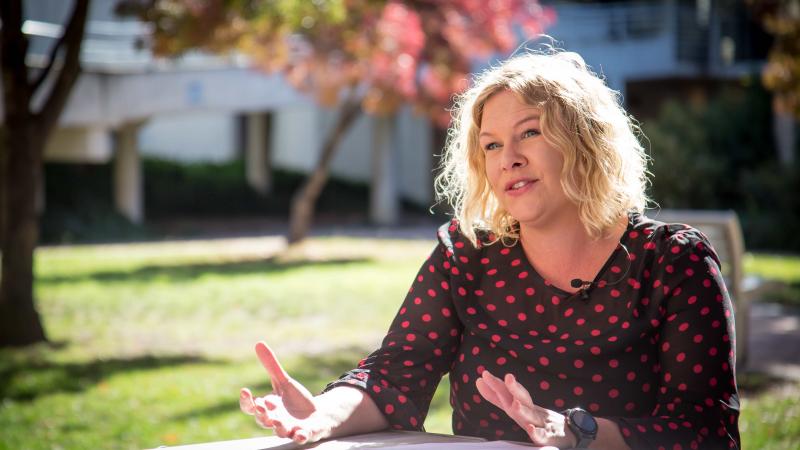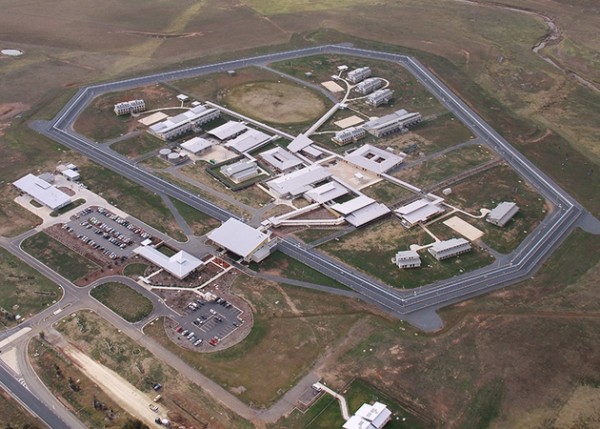
UNSW Canberra Lecturer Caroline Doyle said that the ACT needs to address the challenges that former detainees face or it will be a recipe for re-offending behaviour. Photo: Supplied by UNSW Canberra.
Problems getting a job or somewhere to rent after leaving prison have contributed to the ACT having the highest rate of return prison episodes in Australia, according to UNSW Canberra lecturer Caroline Doyle.
Dr Doyle, who is also the President of Prisoners Aid ACT, said there are more than 500 detainees in Canberra’s Alexander Maconochie Centre (AMC) and about three-quarters of them have been there before. This compares to a national average of 57 per cent.
She said that most people probably would not associate an affluent jurisdiction such as the ACT with a ‘revolving door’ style prison system, but detainees actually return to the AMC an average of six times and up to as many as 24 times. Dr Doyle believes this needs to change.
“Detainees and former detainees often have made one mistake in their life. We’ve all made mistakes and so we all deserve a second chance,” Dr Doyle said.
She said that when detainees are released from prison, they can experience a range of challenges that impact their rehabilitation into the community. Among the main challenges are getting a job, finding an affordable place to live and making a fresh start while still living in Canberra.
“If we don’t understand and address the challenges that former detainees face, then it is a recipe for re-offending behaviour,” said Dr Doyle, who has teamed up with two ANU researchers to undertake a new study on the issues.
“If we don’t do something, the revolving door will continue,” she said.
Dr Doyle said that obstacles to getting a job after leaving prison can include having a criminal record, a lack of formal qualifications and even a lack of appropriate clothes to wear to a job interview. A criminal record can also be an obstacle for volunteer positions that require a Working with Vulnerable People Card.
Dr Doyle said the fact that the ACT is a small jurisdiction can cause a unique set of challenges, particularly given that parole conditions often confine former detainees to their own state of territory – making a fresh start difficult for Canberra residents.
“What often happens is that individuals, when they are released, have a higher chance of running into individuals that they socialised with prior to being incarcerated,” Dr Doyle said.
“This also presents some barriers when you’re looking at your reintegration into society and your chance of socialising with individuals which perhaps might not assist you with this reintegration.”
Dr Doyle said that affordable housing is a nationwide problem, but it is even more difficult in Canberra as the city has the most expensive rental market in the country.
“Rental properties are cheaper in Queanbeyan than they are in the ACT, but because of that condition of your parole that you’re unable to leave the ACT, then you’re unable to access that housing,” Dr Doyle said.
The ACT Government has a goal of reducing recidivism by 25 per cent by 2025 and in February announced a plan to achieve this by redirecting $14.5 million in funding from expanding the crowded prison to community and rehabilitation programs.

Instead of expanding the crowded Alexander Maconochie Centre (above), the ACT Government plans to redirect funding to community and rehabilitation programs. File photo.
The Government is planning to develop a purpose-built “reintegration centre” on the AMC site, and also to provide more supported housing for former detainees.
Dr Doyle said that a detainee’s re-entry into the community is not really a static event, but a social process which incorporates their life before prison, their immediate release and the years that follow this.
Dr Doyle said there has been no qualitative assessment of the experiences of former detainees following their release from the AMC and so she has teamed up with ANU researchers Professor Lorana Bartels and Dr Anthony Hopkins for a new study.
The study aims to explore the lived experiences of former detainees, identify the service providers they engaged with and understand what works well and what can be improved.
The project will interview former detainees at one month, three months and six months after their release from the AMC.
“In the study, by following a narrative design, we acknowledge that an individual can tell a story about their experiences and provide them with some motivation in this process that things will actually get better,” Dr Doyle said.
Are you surprised that the ACT has such a high rate of return prisoners? What do you think should be done about this? Let us know in the comments below.




















